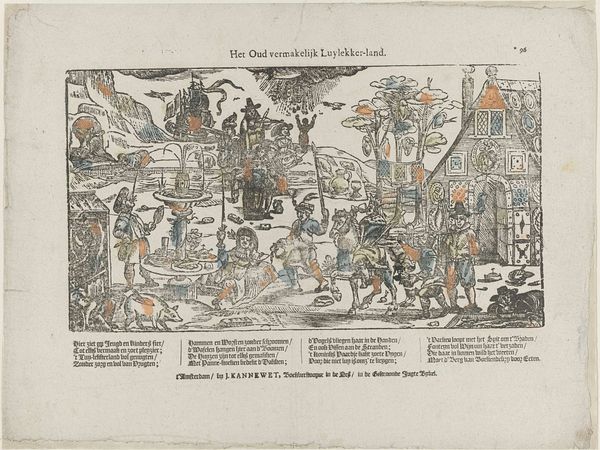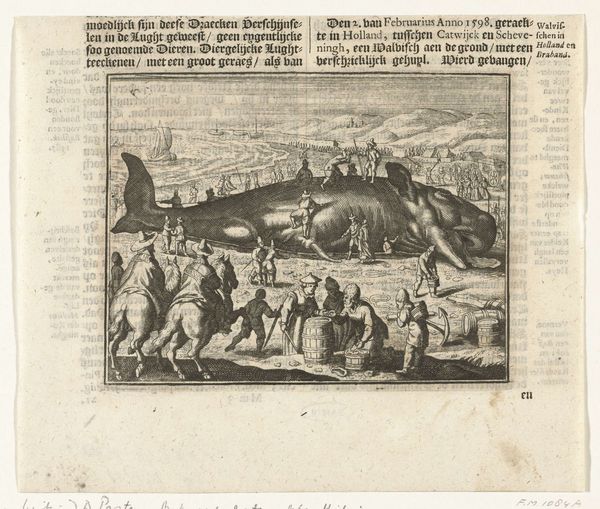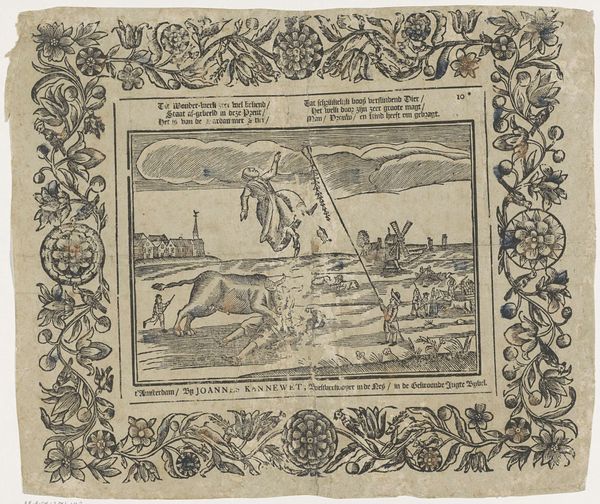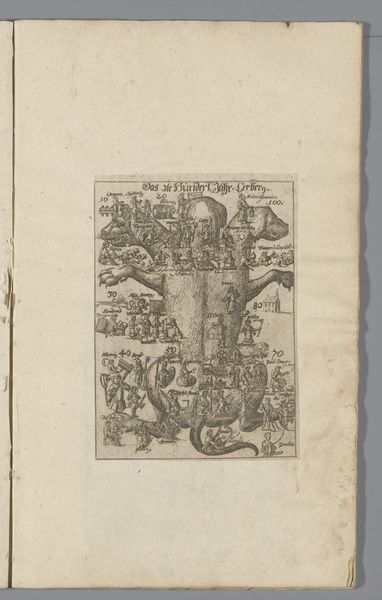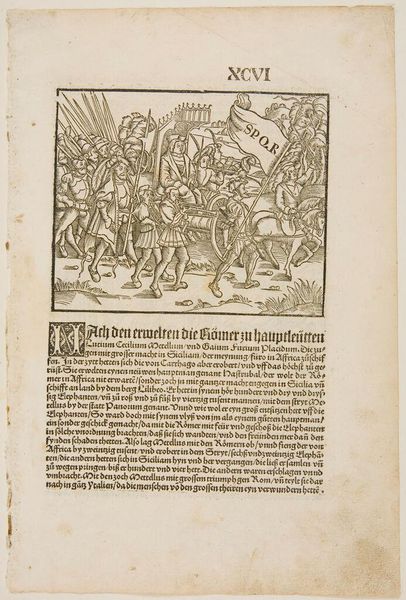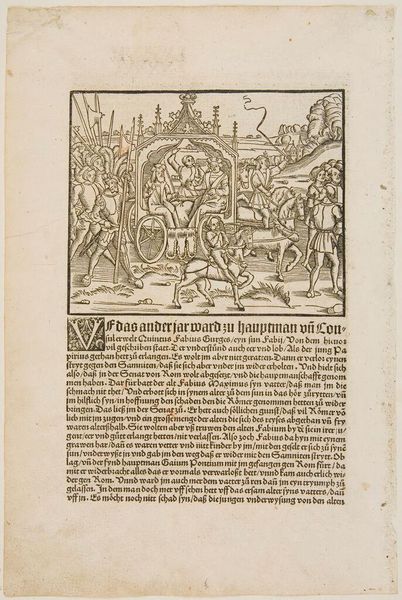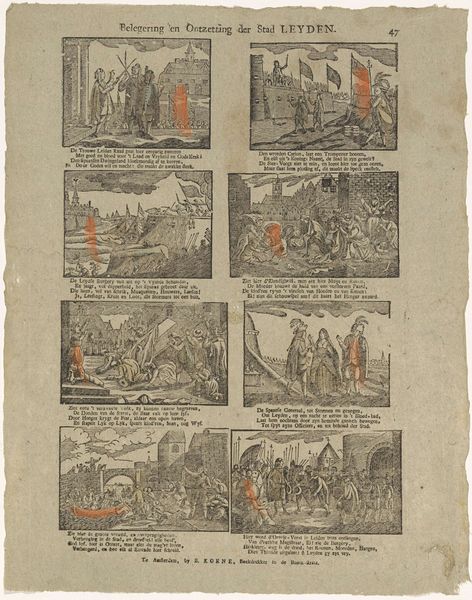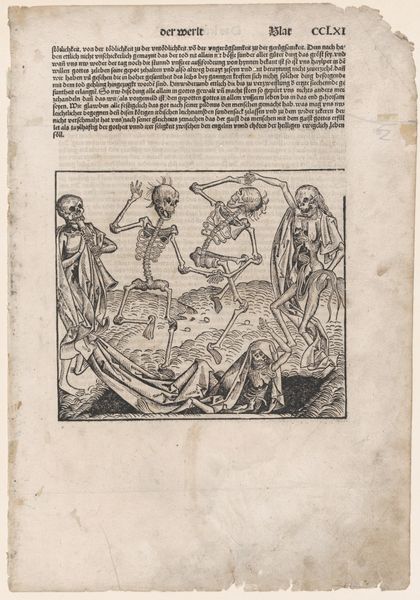
drawing, print, paper, ink, engraving
#
drawing
#
narrative-art
#
baroque
# print
#
figuration
#
paper
#
ink
#
pen-ink sketch
#
history-painting
#
engraving
Dimensions: height 434 mm, width 316 mm
Copyright: Rijks Museum: Open Domain
Editor: This pen-and-ink sketch is titled "Genesis aen het VII Capittel" by Gijsbert de Groot Keur, created sometime between 1738 and 1767. It's a print depicting Noah's Ark. I’m immediately struck by the chaotic energy of all those animals converging. How do you see this work within its historical context? Curator: It's interesting to consider the role of religious imagery in 18th-century Dutch society. This print, an engraving on paper, likely served a didactic purpose. We often overlook how the burgeoning print market democratized access to biblical stories. It was less about individual artistic expression and more about mass communication of moral narratives. Notice how the Ark, though central, is almost overwhelmed by the teeming animals. Does that suggest anything to you about the artist’s or the public’s concerns at the time? Editor: Possibly a sense of urgency or even the sheer scale of God's creation and demand? Or maybe the printing was geared for a specific public that had less interest in the refinement of other forms of visual art? Curator: Precisely! Consider the influence of the Reformation. Art's function shifted, didn't it? From ornate church decoration to more personal and readily available forms. The somewhat crude engraving style would have kept costs down and reached a broader audience beyond the wealthy elite. Furthermore, remember Amsterdam was a center of trade and tolerance, leading to diverse interpretations of scripture coexisting publicly. How might such accessibility challenge traditional authority? Editor: So, this print isn’t just art, it’s also a form of social commentary or a tool within a larger religious and political landscape. The availability of this image would allow for more varied engagement and the promotion of specific moral values? Curator: Exactly. And think about the economics. The art market became driven by commerce, accessibility and meeting demands of the common person. That really does challenge older hierarchies of patronage and artistic subject matter, wouldn’t you agree? Editor: I do! I never considered the role of mass production in democratizing not only religious knowledge, but maybe access to some form of “high art” for the general public. It definitely gives me a new way of looking at the art in this time. Curator: Agreed. Seeing beyond aesthetics reveals how art becomes woven into the very fabric of its time.
Comments
No comments
Be the first to comment and join the conversation on the ultimate creative platform.


